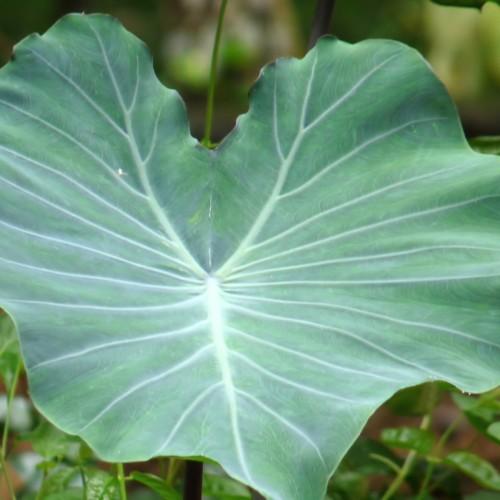
taro
Colocasia esculenta (vegetable group)
Also Known As - coloyam,elephant's ear,elephant's earCycle:
Perennial
Watering:
Frequent
Hardiness Zone:
8 - 10
Flowers:
Flowers
Sun:
filtered shade,part sun/part shade
Soil:
Acidic, Bog, Humus rich
Fruits:
Fruits Ready In Fall
Edible:
Yes
Leaf:
Yes
Growth Rate:
Low
Maintenance:
Moderate
Drought Tolerant:
Yes
Salt Tolerant:
Yes
Tropical:
Yes
Care Level:
Medium
watering
Taro (Colocasia esculenta) must be kept moist and should be watered at least twice a week, or more frequently if the soil starts to become dry. Make sure to water around the root system and not over the foliage to help avoid fungal diseases. During the growing season, you may want to increase the frequency of watering to ensure that the plant has a constant, ample supply of moisture.
sunlight
Taro (Colocasia esculenta) requires full sunlight for 6 to 8 hours per day. It is best to keep the plant as close to a window as possible to ensure that it is receiving the optimum amount of light. In addition, if planting outdoors, it is recommended to provide shade during the hottest hours of the day from direct sunlight. Too much sun will cause the leaves to become sunburnt and significantly reduce the yield and harvest of the crop.
pruning
Pruning is an important part of providing optimum care for taro plants. For best results, prune taro plants during times of active growth. Prune off dead and diseased leaves, stems and flower stalks when they are visible. This can be done any time throughout the year. Prune back the foliage to maintain a reasonably open crown shape in the center. Use sharp pruning blades or scissors to make clean cuts. Prune off the tips of overgrown or leggy canes when they reach more than 3 feet in height. This will help encourage bushier growth and overall shape. Prune off the lowest leaves on the stem of the taro plant in late winter to early spring to reduce possible disease and pest problems. Prune more severely if the plant is large and overgrown. Remove up to 1-third of the foliage at a time, pruning away the tallest pieces first. With taro plants, aim to keep the foliage within 2-3 feet in height.
